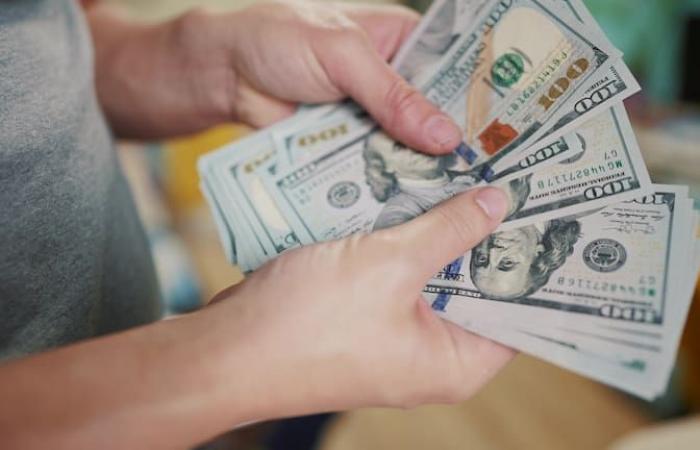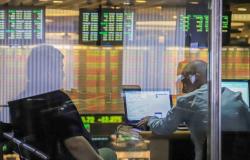Hear
In recent months, a new investment has made its way into the portfolios of Argentine savers. Since they came onto the secondary market, the Bonds for the Reconstruction of a Free Argentina, better known as Bopreales, these assets gained appeal among those investors who seek to have an income in dollars: They mature in the current government administration, pay in hard currency and currently some options have a return of 20% annualized.
These bonds were issued in mid-December by the Central Bank (BCRA). It was one of the first measures taken by Javier Milei’s economic team, with the aim of giving an alternative payment abroad to all those importers who had commercial debt contracted before December 13, 2023 due to not having been able to access the exchange market due to the restrictions and the lack of international reserves during the administration of Alberto Fernández.
Various series were issued, each with different characteristics, and companies were able to acquire these bonds through the tenders launched by the Government. Weeks later, the Bopreales began to operate on the secondary market, where Today retail and institutional investors can purchase them in both pesos and dollars, but they pay returns in hard currency.
“The Bopreales can be useful for investors who look for a bet in dollars, but with lower risk than sovereign bonds, which are longer securities. In turn, as they were issued by the Central Bank itself, which accumulated more than US$17,000 million since the beginning of the administration, the ability to pay is not in doubt. This is reflected in their prices, which are already worth between US$70 and US$94, depending on their maturity. The Bopreales offer a quite different range of options for different profiles,” said Javier Casabal, fixed income strategist at AdCap Grupo Financiero.
Anyway, Melina Di Napoli, product analyst at wealth management from Balanz Capital, suggested these assets for investors who are moderate or “dynamic”, due to the volatility they have in their prices. “However, we observe that When markets shake, Bopreales fell less than sovereign bonds from the Bonares (AL) or Globales (GD) family,” he added.
Among its characteristics, Di Napoli mentioned that all Bopreales expire during the mandate of Javier Milei: some of them in 2025, others in 2026 and the same in 2027. In turn, the issuance amounts add up to US$10,000 million across all series, of which US$3,500 million issued have a clause (BPOA7, BPOB7 and BPOC7) which allows you to pay taxes with these securities or request from the Central Bank the pesos equivalent to the official exchange rate. If all holders chose to use any of these clauses, the BCRA would have to disburse US$6.5 billion from reserves for all payments.
“The interesting thing is that AFIP will take the technical value of the bond at the MEP dollar or the official dollar, whichever is higher at the time of application to the payment. To give a simple example, today you could buy the Bopreal Series 1 A, at US$92 for every 100 nominal, and as of 04/30/2025 it could be applied to the payment of taxes at US$100 multiplied by the MEP dollar or the official dollar, whichever is higher at that time. If the investor decides not to use it for taxes, they will collect a flow in dollars at maturity”, he highlighted.
For Juan Manuel Franco, chief economist of the SBS GroupFor the most conservative investors, the security maturing in June 2025 looks attractive. (BPJ25). Although it does not pay interest, it is amortized in 12 equal monthly installments starting in July 2024, and with an investment horizon of just one year. Its current yield is 7.9% in dollars.
On the other hand, Casabal indicated that the Bopreal Series 1A (BPA7C) is a security that yields 21% annualized. “It should work very well until April 2025, when it can begin to be used to pay taxes. By that date, it should be highly sought after on the secondary market.when we expect there to be demands close to US$98, while it is currently worth less than US$91″, he stressed.
However, he added that AdCap sees with greater potential for Bopreal Series 1B (BPOB7) and Series 3 (BPY26), both with an annualized return of 20%The first can be used to pay taxes starting in April 2026, which “ensures demand for that date,” and in the meantime will pay a 5% annual coupon. The second, although it has a lower coupon than 3%, is “substantially more liquid” due to the size of its issue.
Finally, for the most risky investors, he pointed to the Bopreales 1C (BPOC7) and 1D (PBOD7). They are longer securities, since they mature in 2027 and are similar to Treasury bonds, although with lower sovereign risk. In the last correction, while the Global 2035 fell 14%, the Bopreal 1D fell 7%.
“It is important to know that the debtor in this case is the BCRA and not the Treasury. And, in general, the market considers the Central Bank more ‘reliable’ than the Treasury in terms of debt. In any case, it should also be known that, since these bonuses are paid in dollars (with the exception of strips of the Bopreal Series 1 that, on certain dates, the investor can choose to collect them in pesos against the official dollar), it is an issue in a currency that the monetary authority does not issue and, therefore, The payment capacity depends on the accumulation of reserves”Franco closed.






